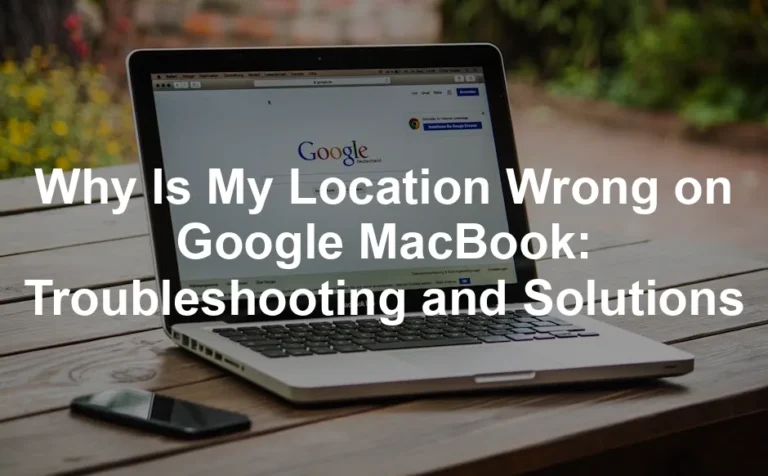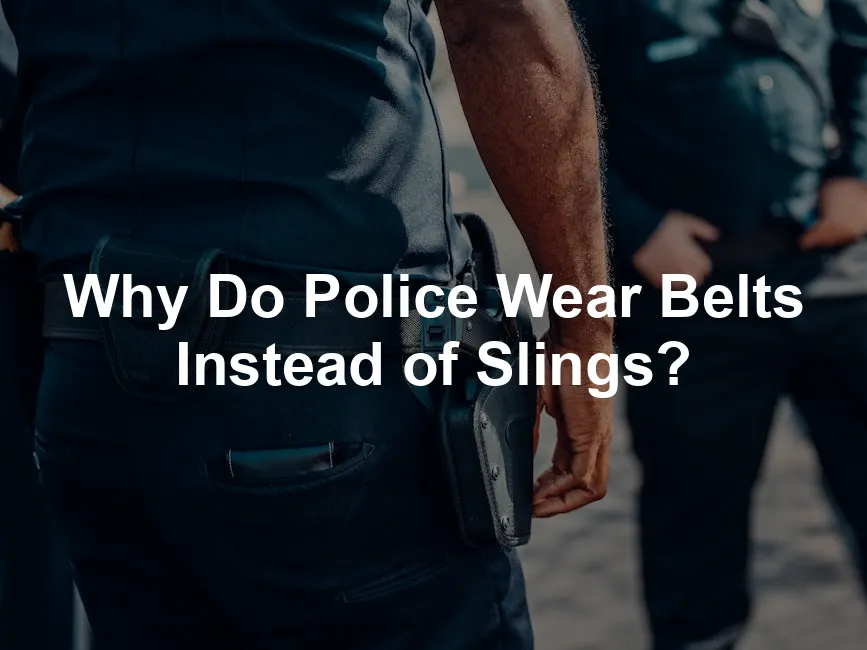
Why Do Police Wear Belts Instead of Slings?
Introduction
In the world of law enforcement, every piece of equipment tells a story. Among these essentials, the police duty belt stands out as a critical gear that officers rely on daily. Ever wonder why police officers opt for belts rather than slings to carry their equipment? It’s not just a matter of style; it’s about function, safety, and efficiency.
The duty belt is designed to provide officers with quick access to their tools. Imagine needing to grab your handcuffs or firearm in an emergency; a belt allows that swift motion. Slings, while useful for carrying a single firearm, can hinder movement and create chaos during high-pressure situations.
Weight distribution plays a significant role too. Unlike slings that can strain one shoulder, belts evenly spread the load around the waist. This balance minimizes fatigue and discomfort, allowing officers to stay focused on the task at hand.
Moreover, duty belts have evolved with law enforcement needs. They keep equipment organized and secure, reducing the risk of gear loss during confrontations. The design of a duty belt allows for personalization, making it easier for officers to carry the tools they need most frequently.
So buckle up—it’s going to be an informative ride that might just change how you view that modest belt around an officer’s waist! In this article, we’ll unravel the practicality behind this choice, exploring everything from weight distribution to accessibility.
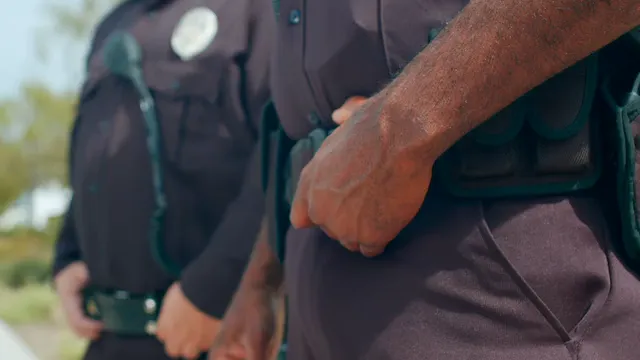
Summary
This article delves into the reasons police officers wear duty belts instead of slings, highlighting key points such as:
- Accessibility: Duty belts allow for quick access to essential tools like firearms, handcuffs, and radios.
- Weight Distribution: Unlike slings, which can concentrate weight on one shoulder, belts distribute gear weight evenly around the waist, minimizing back strain.
- Mobility: Belts provide officers with the full range of movement needed during high-pressure situations, ensuring they can respond effectively to emergencies.
- Tradition and Design Evolution: The historical development of duty belts illustrates their practicality in modern policing, leading to specialized designs that meet various operational needs.
- Safety Concerns: Belts prevent equipment loss and increase retention, ensuring that tools remain securely attached even during physical altercations.
- Customization: Officers can personalize their duty belts based on their individual roles and preferences, enhancing their operational readiness.
By understanding these aspects, readers will gain insight into why the duty belt is not just a fashion statement but a necessity in law enforcement.

The Role of the Police Duty Belt
Definition and Purpose
A police duty belt is no ordinary belt. It’s a specialized tool that holds essential gear for law enforcement officers. Imagine it as a mobile command center, worn around the waist, ready to deploy at a moment’s notice. This belt carries everything from firearms to handcuffs, ensuring officers have quick access to their equipment in critical situations. The primary function? To enhance efficiency and safety during operations.
To ensure you’re ready for any situation, consider investing in a Blackhawk Duty Belt. It’s designed for durability and comfort, ensuring that your essential gear is always close at hand.
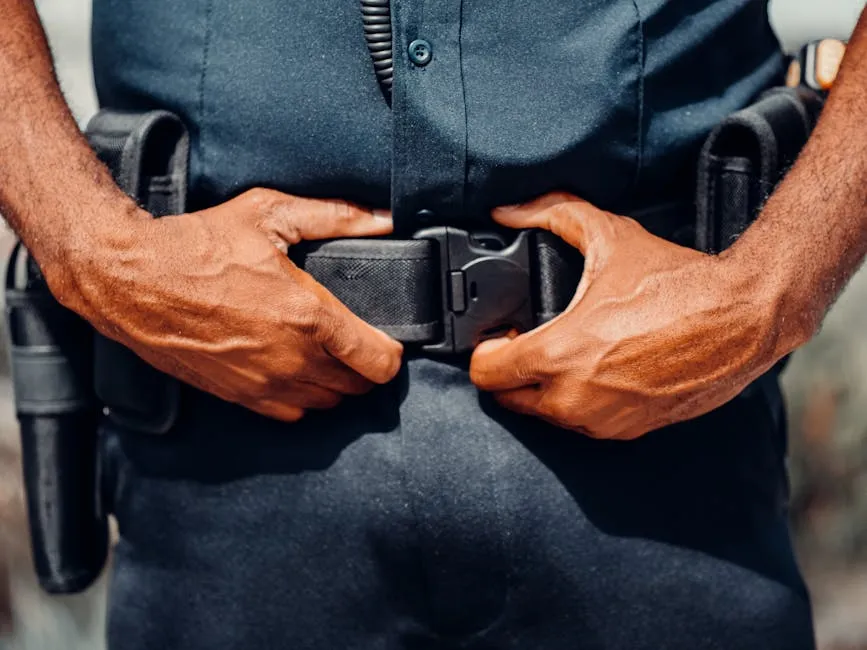
Key Characteristics
Modern duty belts are designed with durability in mind. They’re crafted from high-quality materials like nylon or leather, ensuring they can withstand the rigors of daily use. Accessibility is another crucial feature. Officers need to grab their gear swiftly, and these belts are structured to allow that. A secure fit is vital too. These belts come with strong buckles and retention systems that prevent gear from shifting or falling off during high-stakes encounters. Comfort plays a significant role as well. With proper weight distribution, officers can wear them for long shifts without excessive strain on their bodies.

Why Do Police Wear Belts Instead of Slings?
Mobility
Let’s talk about mobility. Picture an officer trying to chase down a suspect while wearing a sling. Sounds like a recipe for disaster, right? Belts give officers the freedom to move dynamically. Slings can restrict arm and shoulder movement, making it harder to perform essential tasks during critical situations. What’s the point in having quick access to gear if you can’t even reach it because your movement is limited? Duty belts allow for the full range of motion, crucial when every second counts.
Weight Distribution
Now, onto weight distribution. Carrying equipment on a belt is like having a well-organized closet. Everything has its place, and it’s easy to find what you need. Slings, on the other hand, concentrate weight on one shoulder. This can lead to back and shoulder strain, which is a big no-no for officers who often work long hours. An evenly distributed load on the waist ensures that officers can wear their duty belts comfortably throughout their shifts, minimizing fatigue.
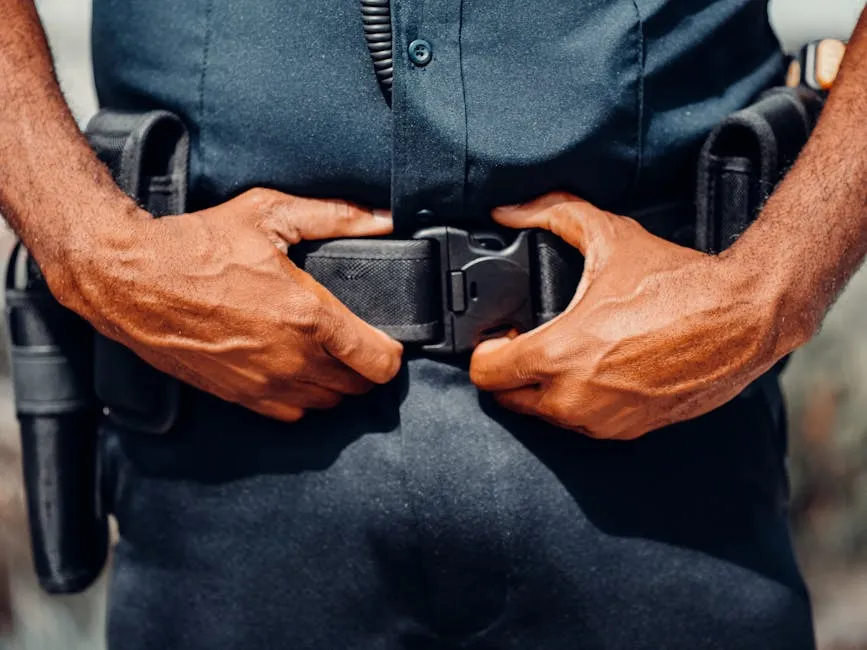
Accessibility
Quick access is key in law enforcement. Imagine needing your firearm or handcuffs in a hurry. With a duty belt, everything is within arm’s reach. This setup allows officers to retrieve their tools without fumbling around or losing precious time. In contrast, slings can complicate access. They often result in tangled gear or awkward positions, making it challenging to respond effectively. The design of duty belts ensures that every tool is organized, facilitating rapid retrieval when it matters most.
In essence, police officers wear duty belts instead of slings for practical reasons. Mobility, weight distribution, and accessibility are paramount in high-pressure situations. These belts are not just functional; they’re life-saving tools that empower officers to do their job efficiently and effectively.
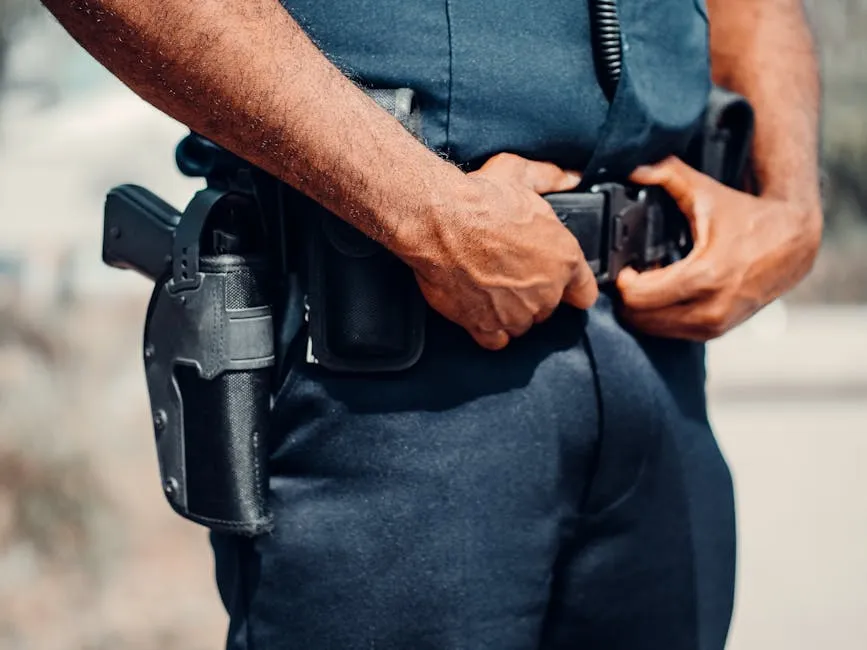
Advantages of Using Belts Over Slings
Quick Access
Picture this: an officer sees a suspect fleeing. In that moment, seconds matter. With a duty belt, grabbing essential tools is lightning-fast. Firearms, handcuffs, and radios are right at their fingertips. Slings? Not so much. They can tangle and slow you down. A belt’s layout means no fumbling around. Everything is organized, ensuring that officers can act swiftly when it counts. Whether it’s a taser or a flashlight, quick access to gear can make all the difference in those high-stress situations.
To enhance your quick access capabilities, consider adding a Surefire Flashlight to your belt setup. This durable flashlight is perfect for low-light situations, ensuring you’re always prepared to illuminate the dark corners of your duties.
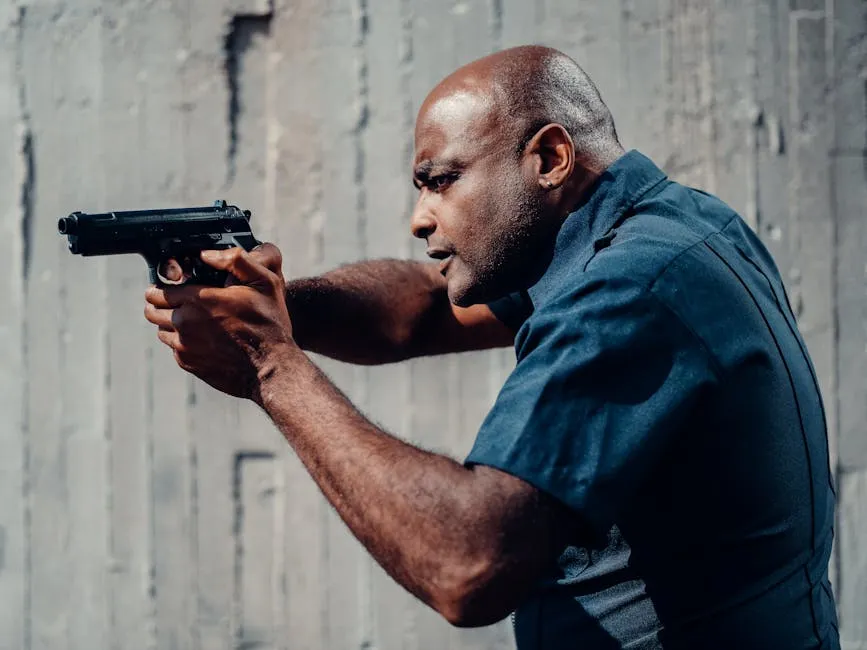
Balance and Comfort
Now, let’s talk about comfort. Carrying gear on a belt spreads weight evenly across the waist. This means less strain on the back and shoulders. Imagine carrying a heavy backpack on one shoulder; it’s uncomfortable and awkward. The same principle applies to slings. They concentrate weight on one side, leading to fatigue. A properly fitted duty belt allows officers to move naturally, maintaining comfort during long shifts. This balance is crucial when officers are on their feet for hours, ensuring they stay focused and ready for action.
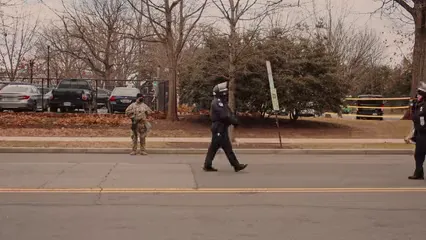
Safety and Retention
Safety is paramount in law enforcement. Duty belts secure equipment tightly, preventing accidental loss during scuffles. Think about it: if a suspect tries to grab gear, a belt holds everything in place. Slings lack this level of security. Items can easily be snagged or yanked away. A belt’s design includes loops and holsters that keep tools secured. In confrontations, this can prevent valuable equipment from being lost or stolen. The retention features of a duty belt provide peace of mind, allowing officers to focus on their critical tasks without worrying about their gear.
In summary, the advantages of duty belts over slings are clear. Quick access ensures that officers can respond in emergencies. The balanced load enhances comfort, allowing for better performance on the job. Plus, safety features secure essential equipment, making belts the superior choice for law enforcement professionals. It’s not just a belt; it’s a lifeline in high-pressure situations that allows officers to perform at their best.

The Ideal Duty Belt Setup
Essential Equipment
Every officer needs a well-stocked duty belt. Common items include holsters for firearms, handcuffs, radios, and batons. But it doesn’t stop there. Officers often carry pepper spray and flashlights, ensuring they’re ready for any situation. Each item plays a crucial role in maintaining safety and efficiency on the job. A well-equipped belt is like a toolbox, ready for action at a moment’s notice.
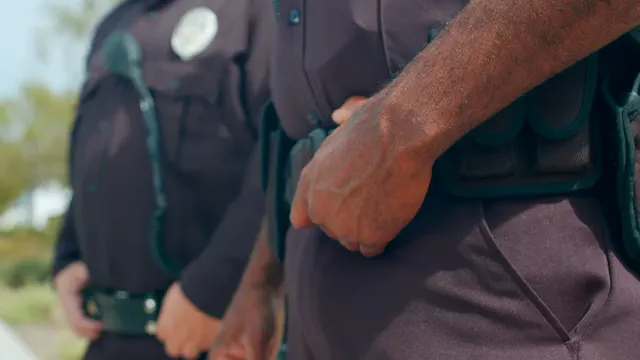
If you’re looking for a reliable holster, check out the Galco Miami Classic II Shoulder Holster. This stylish and functional holster is perfect for keeping your firearm secure and accessible.
Organizational Tips
Arranging gear on a duty belt is an art form. First, position the firearm on the dominant side for easy access. Next, place handcuffs front and center. This layout allows for swift retrieval during critical moments. Flashlights and radios should be on the non-dominant side, ensuring they’re accessible without interfering with firearms. Balance is key; heavier items should be distributed evenly to avoid strain. Regularly test and adjust the setup to find the most effective arrangement, tailored to individual needs.
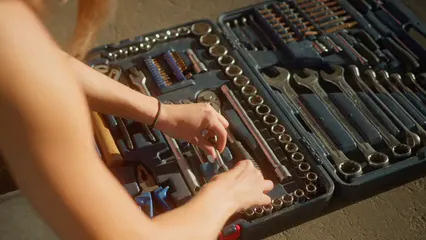
Testing and Adjusting
Practice makes perfect, especially with a duty belt. Officers should wear their fully loaded belts during training sessions. This helps establish muscle memory for drawing weapons and accessing gear. Jogging or sprinting while wearing the belt can reveal any adjustments needed for comfort and accessibility. Jumping or performing movements will show if anything shifts or makes noise. Regularly testing the belt ensures it remains functional and comfortable, so officers can rely on it during actual encounters.
In conclusion, a well-organized duty belt is fundamental for law enforcement. Essential equipment must be strategically placed for optimal access and balance. Testing and adjusting the setup enhances comfort and performance, ensuring officers are always prepared for whatever comes their way. A thoughtfully configured belt is not just a matter of convenience; it’s a critical component of effective police work.
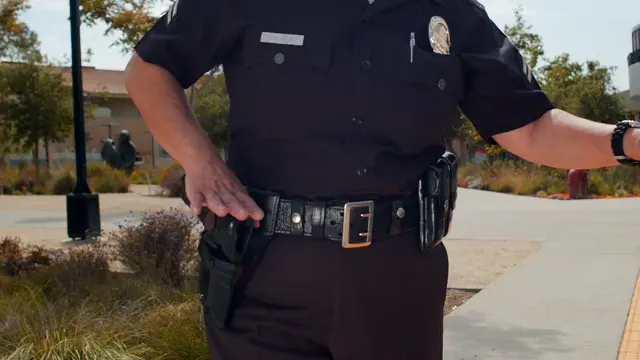
The Evolution of Police Gear: From Slings to Belts
Historical Context
The history of police gear is a tale of necessity and adaptation. In the early 1900s, police officers carried their equipment in pockets or bags. This practice, however, proved cumbersome, especially during high-stakes situations. Enter the duty belt, often called the Sam Browne belt, which emerged as a practical solution. Initially made of leather, these belts offered a sleek way to carry essential gear. Over time, the design evolved, incorporating pouches and holsters that kept equipment organized and accessible. As law enforcement needs grew, so did the functionality of these belts. Today, they are essential for providing quick access to tools officers need in emergencies.
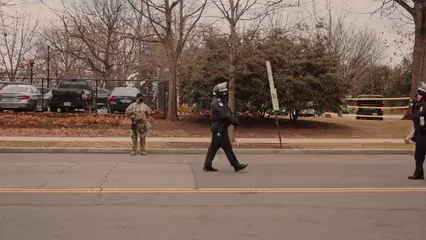
Modern Innovations
Fast forward to modern times, and technology has played a significant role in shaping duty belts. With advancements in materials, police belts now often consist of ballistic nylon or synthetic fibers. These materials are lighter and more durable than traditional leather, making them easier to wear for long shifts. Ergonomic designs have been introduced to provide better weight distribution, reducing strain on the lower back.
Moreover, many duty belts now feature modular systems, allowing officers to customize their setups based on individual needs. This adaptability is vital in a profession where every second counts. Integrated technology is also making its way into belt design, with some belts incorporating smart features like GPS trackers or built-in body cameras. These innovations ensure that duty belts are not just functional but also suited for the dynamic challenges of modern policing.
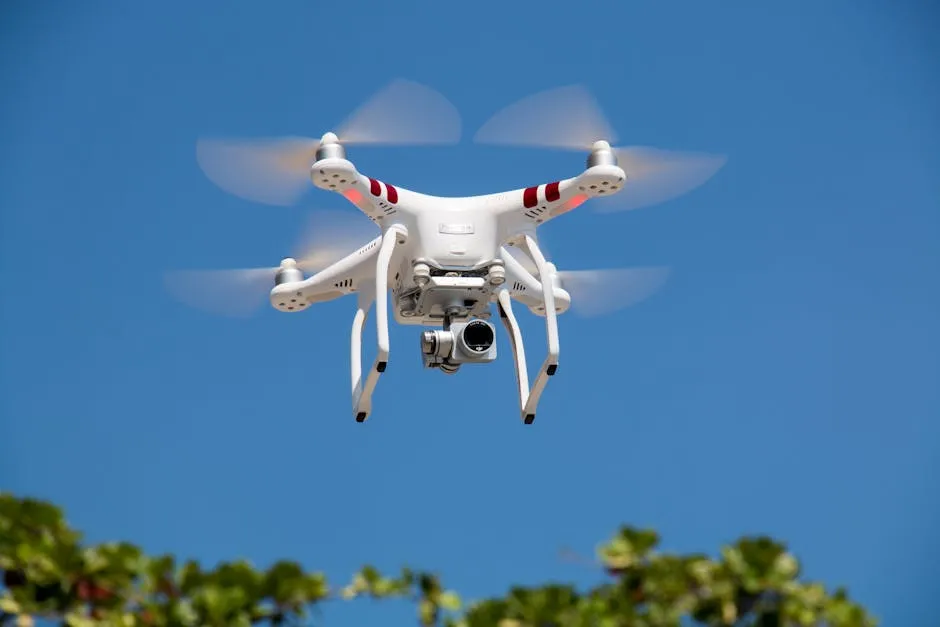
As we can see, the evolution from slings to belts highlights the importance of practicality in law enforcement. The duty belt has become a symbol of readiness, ensuring that officers are equipped to handle any situation that comes their way, all while maintaining comfort and efficiency.
Common Misconceptions About Police Duty Belts
Comfort
Many people believe that duty belts are uncomfortable, often picturing officers struggling to carry their hefty load. However, modern ergonomic designs have changed the game. Today’s duty belts are crafted with comfort in mind. They feature padded materials and adjustable lengths to fit different body types.
This means that officers can wear them for extended periods without discomfort. The weight of the gear is evenly distributed around the waist, alleviating strain on the back and hips. Officers often report that a well-fitted belt feels like a second skin, allowing them to focus on their duties rather than their gear.
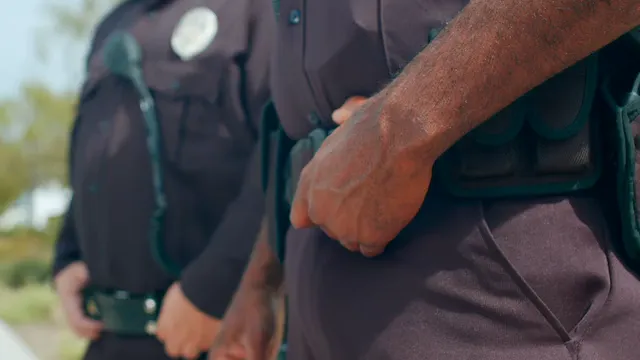
Comparison to Tactical Vests
Tactical vests have gained popularity in recent years, leading to the question: why do officers still prefer duty belts? While vests are beneficial, they can restrict movement and make reaching for equipment more cumbersome. Duty belts, on the other hand, allow for a full range of motion. Officers can sprint, jump, or crouch without feeling hindered by gear.
Additionally, belts provide quick access to essential tools, ensuring that officers can retrieve their firearms or handcuffs swiftly when needed. This accessibility, combined with the comfort of modern designs, solidifies the duty belt’s role as the preferred choice for many officers on the front lines. The combination of practicality and comfort keeps the duty belt at the forefront of police gear, despite the rise of tactical vests.
The Future of Police Equipment: Will Belts Evolve?
As technology and policing needs evolve, so too does the equipment officers rely on. Duty belts are no exception. The future may hold exciting advancements in duty belt technology. Imagine belts crafted from lighter, more durable materials that reduce fatigue while carrying essential gear. Officers could benefit from reduced weight without compromising functionality.
Innovations may also include integrated smart features. Think of belts equipped with GPS trackers or built-in communication devices. These advancements could enhance officer safety and streamline operations, allowing for quicker response times. Such improvements would mean officers can focus on their duties without the hindrance of bulky equipment.
Potential changes in design may also emerge due to evolving policing needs. As law enforcement adapts to new challenges, duty belts may become more modular. Officers might have the option to customize their belts further, adding or removing components based on specific situations. This flexibility could enhance efficiency in various scenarios, from routine patrols to high-stakes situations.
Moreover, with increased emphasis on officer comfort, we might see ergonomic designs that offer better weight distribution and support. The goal is to create a belt that officers can wear for extended periods without discomfort, ultimately improving performance. As law enforcement agencies continue to prioritize officer well-being, the evolution of duty belts will play a crucial role in meeting these demands.
Overall, the future of police duty belts looks promising. With trends pointing toward lighter materials, smart features, and customizable designs, officers may soon wear belts that enhance their effectiveness on the job while maintaining comfort and safety.
Conclusion
Duty belts are vital in law enforcement, serving as essential tools for officers. Their design is rooted in practicality and necessity. These belts provide quick access to vital equipment, ensuring officers can respond swiftly during emergencies.
In high-pressure situations, the significance of a well-organized duty belt cannot be overstated. It allows for seamless transitions between various tools, whether a firearm, handcuffs, or communication devices. This accessibility is crucial for maintaining safety and efficiency on the job.
Moreover, the thoughtfulness behind the gear that officers wear deserves appreciation. Duty belts are designed to reduce strain and enhance mobility, enabling officers to perform their duties effectively. Understanding the intricate details of these belts helps highlight their importance in the law enforcement profession.
As we consider the future of police equipment, we should recognize the foundational role that duty belts play in safeguarding both officers and the communities they serve. By appreciating the thought behind these essential tools, we gain insight into the complexities of police work and the dedication of those who protect us daily.
FAQs
Why can’t police use slings to carry their equipment?
Slings are designed primarily for single items, such as firearms. They lack the security and organization that duty belts provide. Officers need to access various tools quickly during emergencies, which slings cannot accommodate. Additionally, slings can restrict mobility and lead to potential snags during physical altercations.
What equipment do police officers carry on their belts?
On a typical duty belt, officers carry essential items like firearms, handcuffs, radios, and batons. Other common tools include pepper spray, flashlights, and extra magazines. Each item is strategically placed to ensure quick access when needed most, allowing officers to respond effectively under pressure.
Are duty belts uncomfortable for police officers?
Modern duty belts are designed with comfort in mind. They feature ergonomic designs that distribute weight evenly to minimize discomfort. While some officers may experience initial adjustments, most find that a properly fitted belt enhances comfort and allows for greater mobility during long shifts. Regular adjustments and personal preferences can also improve overall comfort while on duty.
Please let us know what you think about our content by leaving a comment down below!
Thank you for reading till here 🙂
All images from Pexels



